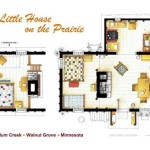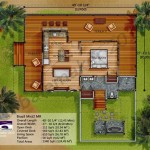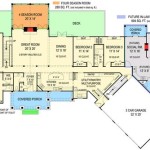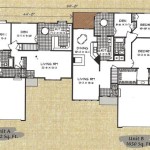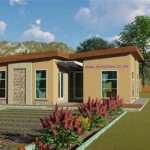DIY Tiny House on Trailer Plans: A Comprehensive Guide
Embarking on the journey of building your own tiny house on a trailer can be both exciting and daunting. With careful planning and access to the right resources, you can create a cozy and functional living space that suits your lifestyle and budget. This guide provides comprehensive insights into the essential aspects of DIY tiny house on trailer plans, empowering you to make informed decisions and navigate the building process with confidence.
1. Design Considerations
The first step in building a tiny house is conceptualizing a design that meets your specific needs and aspirations. Consider the following factors:
- Size and Layout: Determine the ideal size and layout of your tiny house, taking into account the number of occupants, desired amenities, and storage requirements.
- Loft or No Loft: Opt for a loft design to maximize space utilization, or choose a single-level layout for enhanced accessibility.
- Windows and Ventilation: Ample windows allow natural light and ventilation, creating a bright and airy living environment.
2. Selecting the Right Trailer
The trailer serves as the foundation of your tiny house. Choose a trailer that is:
- Load Capacity: Ensure the trailer has sufficient load capacity to support the weight of your tiny house.
- Axle Configuration: Single-axle trailers are suitable for smaller houses, while double-axle trailers offer increased stability for larger structures.
- Brake System: Electric or surge brakes provide adequate stopping power, ensuring safety while towing.
3. Framing and Insulation
The framing provides structural support to your tiny house. Use lightweight materials such as 2x4 or 2x6 lumber, and ensure proper insulation to maintain comfortable indoor temperatures:
- Wall Insulation: Spray foam insulation or fiberglass batts offer excellent thermal protection.
- Roof Insulation: Closed-cell spray foam or rigid foam boards prevent heat loss and provide soundproofing.
- Floor Insulation: Combine rigid foam and radiant barrier to minimize heat transfer through the floor.
4. Siding and Roofing
The exterior of your tiny house plays a crucial role in aesthetics and durability:
- Siding Options: Choose from various materials such as metal, vinyl, or cedar siding, depending on your preferred look and budget.
- Roofing: Consider metal roofing for its longevity and energy efficiency, or opt for asphalt shingles for a more traditional appearance.
5. Electrical and Plumbing Systems
Ensure your tiny house has reliable electrical and plumbing systems:
- Electrical: Install a 12-volt or 120-volt electrical system with solar panels, batteries, and an inverter.
- Plumbing: Utilize a freshwater tank, pump, and water heater to provide running water, and connect to a septic or composting toilet for waste disposal.
6. Interior Design and Decor
Personalize the interior of your tiny house to your taste:
- Space-Saving Solutions: Utilize built-in furniture, foldable tables, and storage under benches to optimize space.
- Multi-Functional Spaces: Design multi-purpose areas that serve multiple functions, such as a bed that also doubles as a sofa.
- Decor and Lighting: Create a cozy ambiance with warm lighting, natural materials, and personal touches.
7. Building Codes and Permits
Adhere to local building codes and obtain necessary permits before constructing your tiny house:
- Occupancy Permit: Ensure your tiny house meets safety standards and is suitable for human habitation.
- Towing Permit: If your tiny house exceeds certain weight or dimensions, you may require a special towing permit.
- Land Restrictions: Confirm zoning laws and land use regulations to ensure your tiny house can be legally parked on your property.
Conclusion
Building a DIY tiny house on a trailer is a rewarding endeavor that requires meticulous planning, careful execution, and a touch of creativity. By following these essential aspects, you can design and construct a cozy and practical living space that reflects your lifestyle and budget. Embrace the journey, seek guidance from experienced builders if needed, and enjoy the satisfaction of creating a home that is uniquely yours.

Free Tumbleweed Diy Tiny House Plans Houses

Tiny House Floor Plans 32 Home On Wheels Design

27 Adorable Free Tiny House Floor Plans Craft Mart

224 Sq Ft Tiny House On Wheels By Living Homes Small Diy Floor Plans

Tiny House Trailer Plans 32 30 Options Triple Axle 21 000 Lbs

Free Plans Tiny House Design Diy

The Top Tiny House Plans For A Diy In 2024

Tiny House Floor Plans 32 Home On Wheels Design

Living Big In A Tiny House Trailers

27 Adorable Free Tiny House Floor Plans Craft Mart



